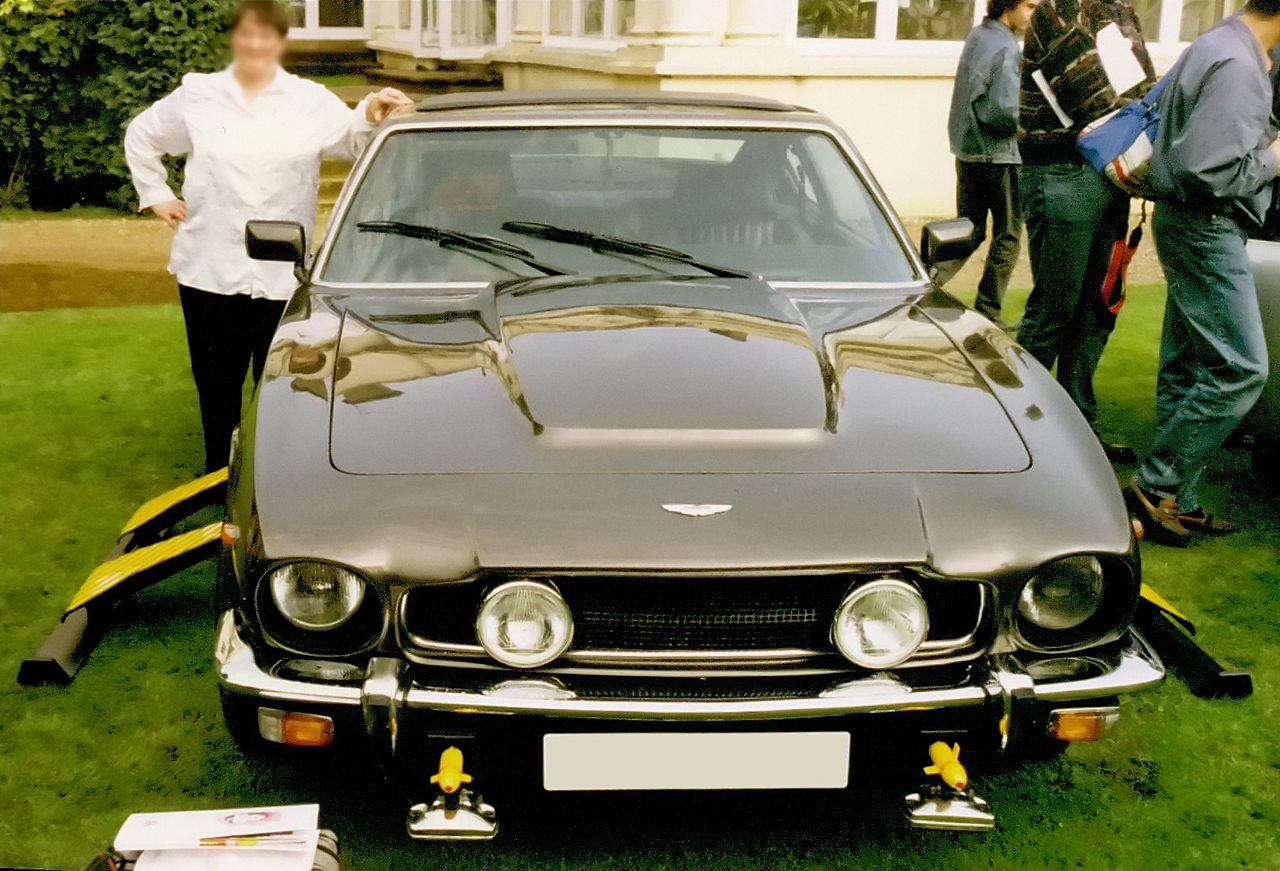| Aston Martin V8 | |
|---|---|

|
|
1972 Aston Martin V8 coupé. Mick from England, CC BY 2.0, via Wikimedia Commons | |
| Manufacturer | Aston Martin |
| Production | 1969–1989 4,021 built[1] (incl. Vantage & Volante) |
| Assembly | Newport Pagnell, Buckinghamshire, England, United Kingdom |
| Body and chassis | |
| Class | Grand tourer |
| Body style | 2-door coupe 2-door convertible |
| Layout | FR layout |
| Related | Aston Martin DBS Aston Martin RHAM/1 Aston Martin V8 Zagato |
| Powertrain | |
| Engine | 5.3 L V8 |
| Transmission | |
| Dimensions | |
| Wheelbase | 2,610 mm (102.8 in)[2] |
| Length | 4,585 mm (180.5 in)[2] |
| Width | 1,830 mm (72.0 in)[2] |
| Height | 1,330 mm (52.4 in)[2] |
| Curb weight | 1,820 kg (4,010 lb)[2](approx) |
| Chronology | |
| Predecessor | Aston Martin DBS |
| Successor | Aston Martin Virage |
Aston Martin V8
The Aston Martin V8 is a grand tourer manufactured by Aston Martin in the United Kingdom from 1969 to 1989. As with all traditional Aston Martins, it was entirely handbuilt – with each car requiring 1,200 man-hours to finish.[4]
Aston Martin were looking to replace the DB6 model and had designed a larger, more modern looking car. The engine was not ready, however, so in 1967 the company released the DBS with the straight-six Vantage engine from the DB6. Two years later, Tadek Marek's V8 was ready, and Aston released the DBS V8. With the demise of the straight-six Vantage in 1973, the DBS V8, now restyled and called simply the Aston Martin V8, became the company's mainstream car for nearly two decades. It was retired in favour of the Virage in 1989.















